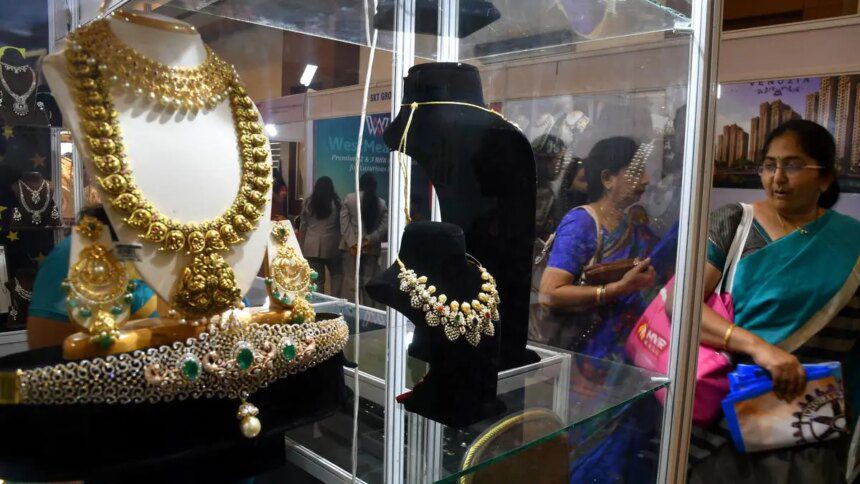Organised players within the Indian gold jewellery industry are predicted to outpace the overall sector, potentially achieving a market share of 45% by FY30, according to a report from Nomura. The Indian jewellery market has experienced notable growth, increasing from $48 billion in FY18 to an estimated $90 billion by FY25, reflecting a compound annual growth rate (CAGR) of 9%. Projections indicate further expansion to $150 billion by FY33E.
The report states that organised players have grown 1.5 times faster than the overall market from FY18 to FY25, registering a CAGR of 14%. Their market share rose from 30% in FY18 to an expected 40% by FY24 and is anticipated to reach approximately 45% by FY30E.
Nomura attributes this structural growth to India’s deep-rooted cultural affinity for jewellery. Weddings, which make up 50-55% of the jewellery market, remain a significant demand driver, bolstered by favourable demographics. Currently, around 25% of India’s population is within the “marriageable” age group, projected to increase from 365 million in 2023 to 390 million by 2030.
Additionally, a growing income pyramid is propelling growth in the daily wear and fashion jewellery segments. The report highlights that organised players are benefiting from enhanced regulations, superior craftsmanship, and rigorous standards of purity and transparency—elements that hold considerable importance in the trust-sensitive jewellery market.
Despite challenges posed by high gold prices, organised players are adapting through innovative strategies such as installment schemes, old gold exchange programs, and lightweight jewellery options. They are also tapping into the e-commerce market, which currently holds a penetration rate of just 6%, while expanding their physical presence in underserved Tier 2, Tier 3, and Tier 4 markets. These approaches are expected to enable organised players to continue outpacing the industry as a whole.
Nomura’s report further emphasizes that jewellery remains a staple in the discretionary spending sector, accessible across various economic classes. With the rising affluent and elite income demographics, demand is expected to persist, making organised players primary beneficiaries amidst the ongoing transformation of the sector.
Published on September 30, 2025










